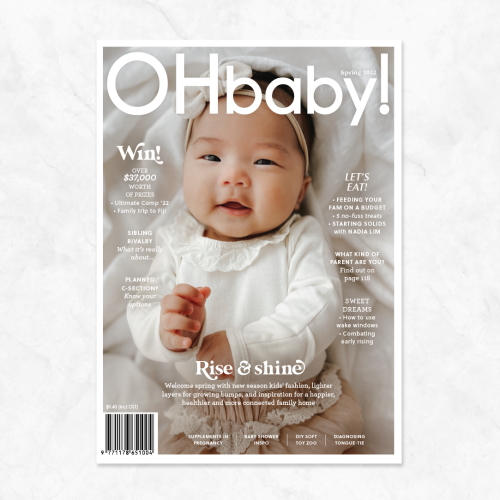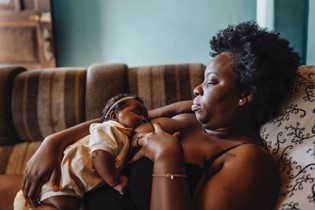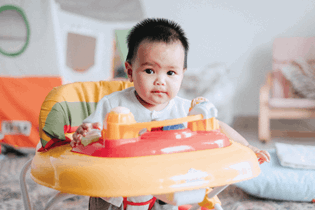Obstetrician shares the latest news on Caesarean sections

Obstetrician, Dr Nick Walker shares the latest on Caesarean section births and how you can make the most of bringing your baby into the world this way.
In this fast paced world, the times are always changing, as the saying goes. This is especially true when it comes to that age-old humankind activity: birthing babies! With the advent and development of modernised maternity systems of care like we’re privileged to have here in New Zealand, we thought it was about time to provide our readers with an update on how things may look when you have your baby.
For those women planning and achieving vaginal birth, much of the detail as to what happens on the day will remain in your control. The choices you make and the options you select based on your situation and preferences will generally be your own, whether these are known well in advance or decided on the go during the labour and birth. You can choose to birth at home, or if your baby arrives very quickly that choice might get made for you! You can choose to use pain relief for labour, though, again, a quick arrival might limit your options. You might choose to birth with one person, or a dozen people supporting you (depending on where you birth and their specific restrictions at the time). After the birth, you may head home to reunite with family in your own environment, or you may spend some time at a postnatal maternity facility for a one-to-one ‘honeymoon’ with your new baby and enjoy the neutral territory and professional support there.
However, for those women planning a Caesarean section birth, many of the aforementioned choices are made for you: you will need to be in an operating theatre, you will need to receive pain relief, you will only be allowed one support person, and at least your first night with your new baby will be spent in hospital. So what choices remain to you? How can you personalise your birth as much as possible, within the confines (physical and protocol-based) of a C-section? This article aims to help answer these and other questions…

WHEN WILL I HAVE MY C-SECTION?
The timing of a planned C-section birth will generally be known in advance, which is a contrast to spontaneous labour. Most maternity facilities will schedule your C-section around the 39 week gestation mark, your due date minus seven days to be exact. The reason for this is straightforward: 38 weeks is a little too early for most babies, with higher odds of your newborn requiring breathing assistance immediately at birth compared to 39 weeks. On the other hand, scheduling C-sections at 40 weeks increases the chance the labour may occur, which results in an urgent or even emergency C-section delivery outside of normal working hours. So 39 weeks is the balance point we are aiming for.
Having made this point, your own individual circumstances may allow an element of choice in the actual date. If your previous pregnancy or pregnancies have gone well past the due date of 40 weeks, you could request a date closer to the due date because your odds of labour are lower. Conversely, if you had previously birthed well before the due date, you could request an earlier date than 39 weeks to reduce the chance of delivering in an emergency. If you have special reasons for preferring one date over another, a scheduling service may take your preferences into account and your lead maternity carer (LMC) might be able to support your request to avoid or land upon a date.
WHO WILL BE MY SURGEON?
In all New Zealand hospitals where C-sections are performed, a specialist obstetrician will always be responsible for your care. In many cases, a training obstetrician, known as a registrar, will perform part or all of your surgery, which is an important part of their learning. You should be reassured that the specialist will only delegate matters within the registrar’s capabilities, and if your case has any complexities the specialist will manage those directly. In this sense, you do not get a whole lot of say in who is performing your C-sections, though it’s within your rights as a patient in the New Zealand health system to be informed fully as to the identity, level of experience and qualifications of those responsible for your birth. In Auckland, Wellington, and Christchurch there are obstetricians who work in private practice, and women under their care have effectively chosen their surgeon, having earlier in the pregnancy chosen them to be their LMC too.
WHERE WILL I HAVE MY C-SECTION?
In the New Zealand health system, you may choose to deliver in any hospital you wish (unless there are medical reasons to be in a high-level ‘tertiary’ hospital). While most women choose their local hospital for convenience, you may choose to be elsewhere for the big day. Whichever hospital you’ve chosen, you and a support person will be guided through a 'pre-op' process, checking into hospital and heading through to an operating theatre. Within the theatre you don’t get much choice in the ‘hardware’ of the procedure; the type of anaesthetic and suite of medications given will be standardised for your safety, and your surgeon will use their preferred surgical materials and operate using methods they’re most comfortable with. You may get some choice in how the final skin layer is closed, the two main options being staples (aka skin clips) and subcuticular (buried under the skin) stitches. Some operating theatres provide the ability for you to listen to your own music, you should enquire if this is possible and if so, you could prepare around an hour long playlist that is both relaxing and enjoyable to you. A common default in theatre where I work is an easy-listening radio station, but it’s always a bit of a shame if the ads are playing as the baby is born!
Following the birth in the theatre, you’ll usually spend around an hour in a recovery room, then be transported off to a postnatal ward. Some women will spend one to three nights there, others choose to go home the following day or go on to a low-level maternity unit for extra support. These units are fully able to care for women who have birthed by C-section, having a complete range of pain relief options. Once 12-24 hours have passed, the need for hospital level care has passed, so you are not bound to stay, and have some choice from then onwards.
HOW WILL MY C-SECTION BE DONE?
Your surgeon and anaesthetist will, before the procedure, give you a run-through of what you can expect to happen. You’ll need to sign a consent form to proceed, and as part of that process you may both ask questions and specify your choices in several matters – other than what background music is playing! For the past ten years or so, there has been a general shift towards C-sections becoming more 'family friendly' in recognition that it is much more than just surgery, it is birth.
Whilst being careful to keep the procedure safe, the option to have the surgical drapes lowered at the time of birth is more commonly offered so the new parents can see the baby as soon as possible, in contrast to earlier days when the baby was whisked off for assessment as soon as possible, leaving the parents wondering if all was okay. This is especially relevant during a planned C-section where there is a very low chance of the baby needing immediate attention from a medical perspective.
Another relatively new idea, which has become more and more part of conventional practise, is to observe a period of time between the birth and the cutting of the umbilical cord, aka ‘delayed cord clamping’. You should feel free to request this as part of your birth, as it’s entirely feasible in almost all circumstances, and is beneficial to your new baby. Though the trade-off is that Mum may lose some extra blood during surgery. Most times a surgeon can allow at least a minute of delay in clamping and cutting the umbilical cord after delivery with no significant negative consequences. Following this, and in keeping with the ‘naturalisation’ of Caesarean birth, you may also ask to be allowed skin-to-skin contact in the operating theatre, meaning you get to see and hold your baby up close straight away. In this happy scenario, the baby is settled on your chest and the anaesthetist can continue their job keeping you safe. Someone usually takes nice photos and the obstetrician can finish the post-birth stage of the process – carefully suturing you together, whilst all in the room enjoy your chosen soundtrack. The first Caesarean births were performed many decades ago, and were for a long time reserved for the most desperate and difficult situations, therefore by their nature they were urgent, traumatic and non patient-friendly; doctors performing them had very few options, and patients none. After many years of refinement and improvement, they have evolved into far less dramatic events, becoming more commonplace and much safer. In modern day maternity care they are rightfully regarded as an ‘alternative’ to vaginal birth rather than a ‘problem’. With C-sections being the reality for around 20 percent of births in New Zealand, patients, midwives and doctors alike should all have a hand in continuing to improve the experience so that the special magic of these births can be maximised the full potential!
Dr Nick Walker is a specialist obstetrician working in public practice at National Women's Hospital and private practice in Auckland. He divides his time between these roles and helping his wife care for their four children.

AS FEATURED IN ISSUE 59 OF OHbaby! MAGAZINE. CHECK OUT OTHER ARTICLES IN THIS ISSUE BELOW



















